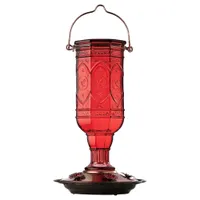How to keep bees away from your pool – 8 simple and effective solutions
Long to enjoy some relaxing and bee-free pool time? Follow these clever ideas
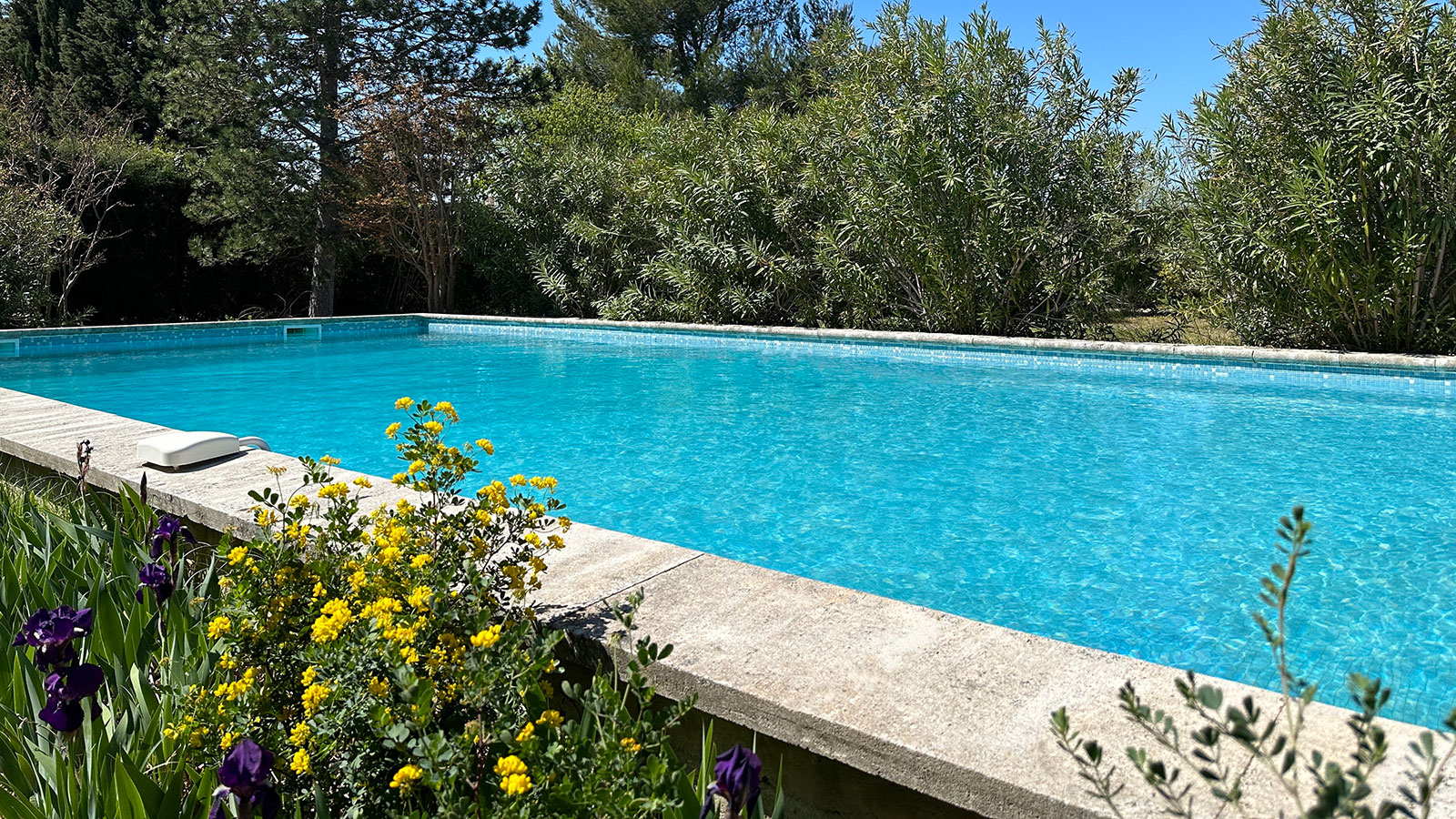
- 1. Plant bee-friendly plants elsewhere in the yard
- 2. Set up a bee hotel
- 3. Keep any poolside food covered
- 4. Make a bee watering station away from the pool
- 5. Plant up pots of strongly scented herbs and flowers
- 6. Avoid bright colors near the pool
- 7. Add jets and moving water to your pool
- 8. Distract bees with hummingbird feeders
- FAQs

Sunny days spent lazing around the pool can be blissful – but not if you end up sharing the water with inquisitive, bothersome insects. By finding out how to keep bees away from a pool naturally you can keep everyone happy and healthy.
Not just attracted by a bright, azure-colored backyard pool, it’s often the unmistakable smell omitted by both chlorinated and salt water that attracts bees to the garden. Whether they are seeking somewhere to re-hydrate or collect water to take back to the hive, these instincts can be overwhelming, often ending up with the pollinators drowning.
Thankfully there are plenty of failsafe tricks to keep bees safe and away from the pool. Many of these depend on knowing a little more about these essential pollinators and their habits.
8 natural methods to keep bees away from a pool
‘Bees don’t just drink water to stay hydrated, they take some back to their hive to keep it cool, feed larva, and dilute honey reserves to keep them fluid,’ explains says David M. Burrows, founder and Managing Director of Arkearth. ‘Water is a very needed resource – especially for bees!’
To keep your pool a bee-free zone you should provide other sources of water elsewhere in your yard. Plus, there are plenty of other stylish and clever ideas from pool experts, landscape designers and wildlife conservationists that can help too. Intended to help these important pollinators thrive, they will also bring beauty and interest to your backyard and pool landscaping too.
1. Plant bee-friendly plants elsewhere in the yard
Entice bees away from your pool with an irresistible floral feast. Whether you have room in your yard for a large planter, border or wild meadow make sure it is brimming with nectar-rich flowers that attract bees.
Provided you keep the floral display in the same location away from your pool word will quickly spread amongst local pollinators, as David explains. ‘Bees communicate to each other in the hive with “booty dances” that basically tell the others where food is, in which direction, and how far away it is. That’s a very sophisticated communication system!’
Design expertise in your inbox – from inspiring decorating ideas and beautiful celebrity homes to practical gardening advice and shopping round-ups.
Some plants for pollinators are more popular to bees than others. This is usually down to the shape of the bloom and how easy it is to land on and access both pollen and nectar. Flat, open daisy type blooms are extremely popular for exactly these reasons – so you can’t go wrong with single dahlias, zinnia, sunflowers, echinacea and cornflowers.
Keeping flowers and trees that are rich in pollen away from your pool will also make your life much easier when it comes to removing pollen from a pool during the spring and summer months.
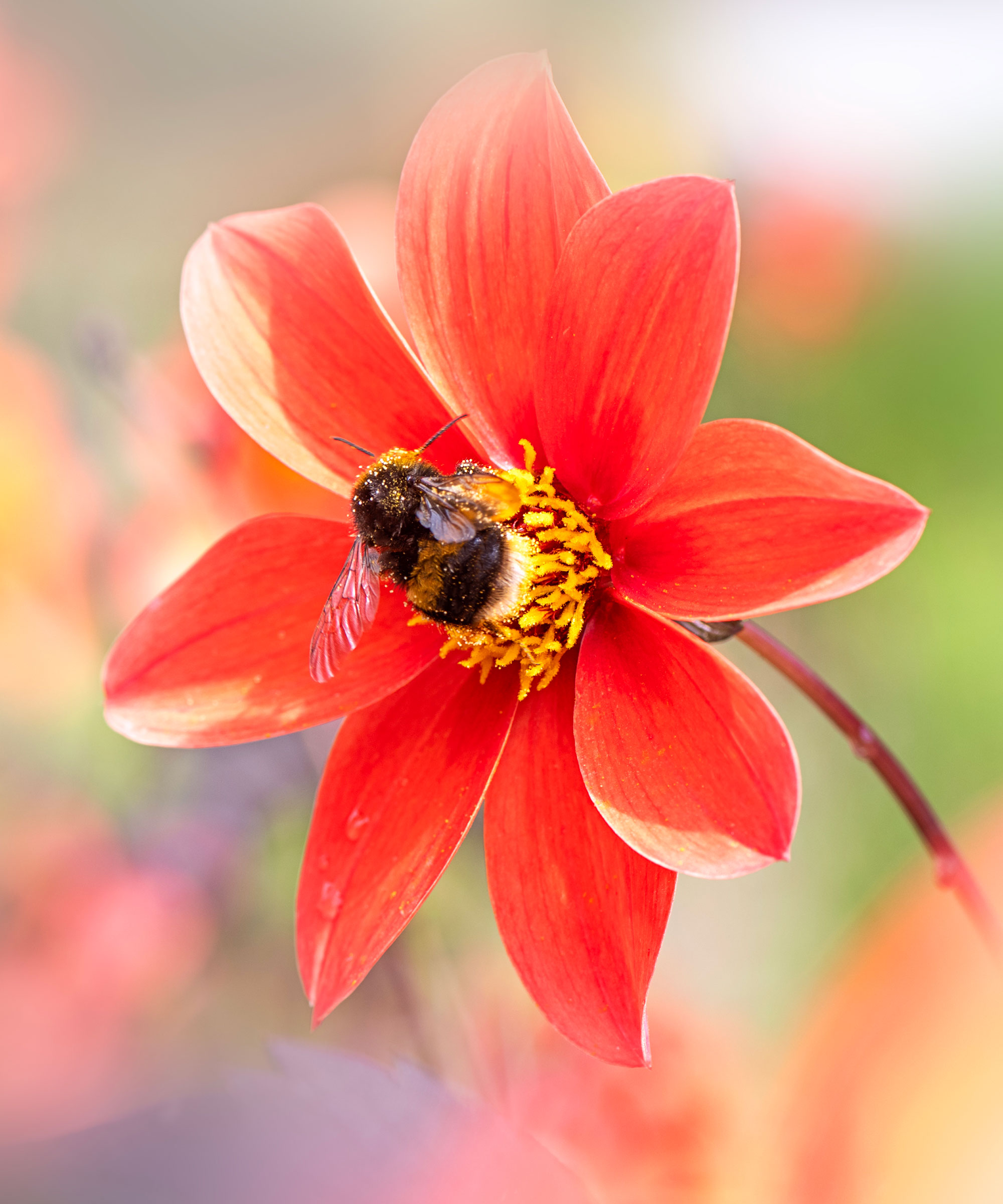
Introduce lots of flowers that bees love, such as dahlias, in areas away from your pool
2. Set up a bee hotel
Finding the right spot to place a bee hotel is key to keeping bees away from your pool. By building one well away from your pool you can create a great distraction for most pollinators.
Fun and easy to do, it’s a fantastic wildlife garden idea that everyone can get involved in and creations can be as simple or imaginative as you like. The easiest option is a container house where everyday objects such as milk cartons, tins, plastic pipes and bottles can be filled with smaller paper tubes, hollow stems or reeds.
David Hunter, founder and owner of Crown Bees, encourages every yard owner to have a go and shares a few basic guidelines for success. ‘When designing a container house make sure you poke a few air vents in the sides or bottom of the container to prevent mold and provide an overhang to protect the nest materials from rain. To promote sustainability, consider repurposing old containers. Just make sure they are adequately cleaned and dried to remove any smells.’
Unsure what to fill your new bug hotel for bees with? David has a few suggestions: ‘Natural, plant-based reeds/stems are the most attractive to bees. Plant species with hollow or pithy stems that you can use as natural nesting materials are: asters, bee balm, phragmites, cup plant, honeysuckle, Joe-Pye weed, raspberry/blackberry, sumac, sunflower, and wild rose.’
Paper straws are also an economical choice. ‘Just make sure you seal the back end of each straw before placing it in your hotel – clay is a natural substance that works as a suitable tube sealant,’ says David.
If you don't want to make your own, this Nature's Way purple bee house from Amazon is a colorful option that can be left as a freestanding design or attached to a tree.
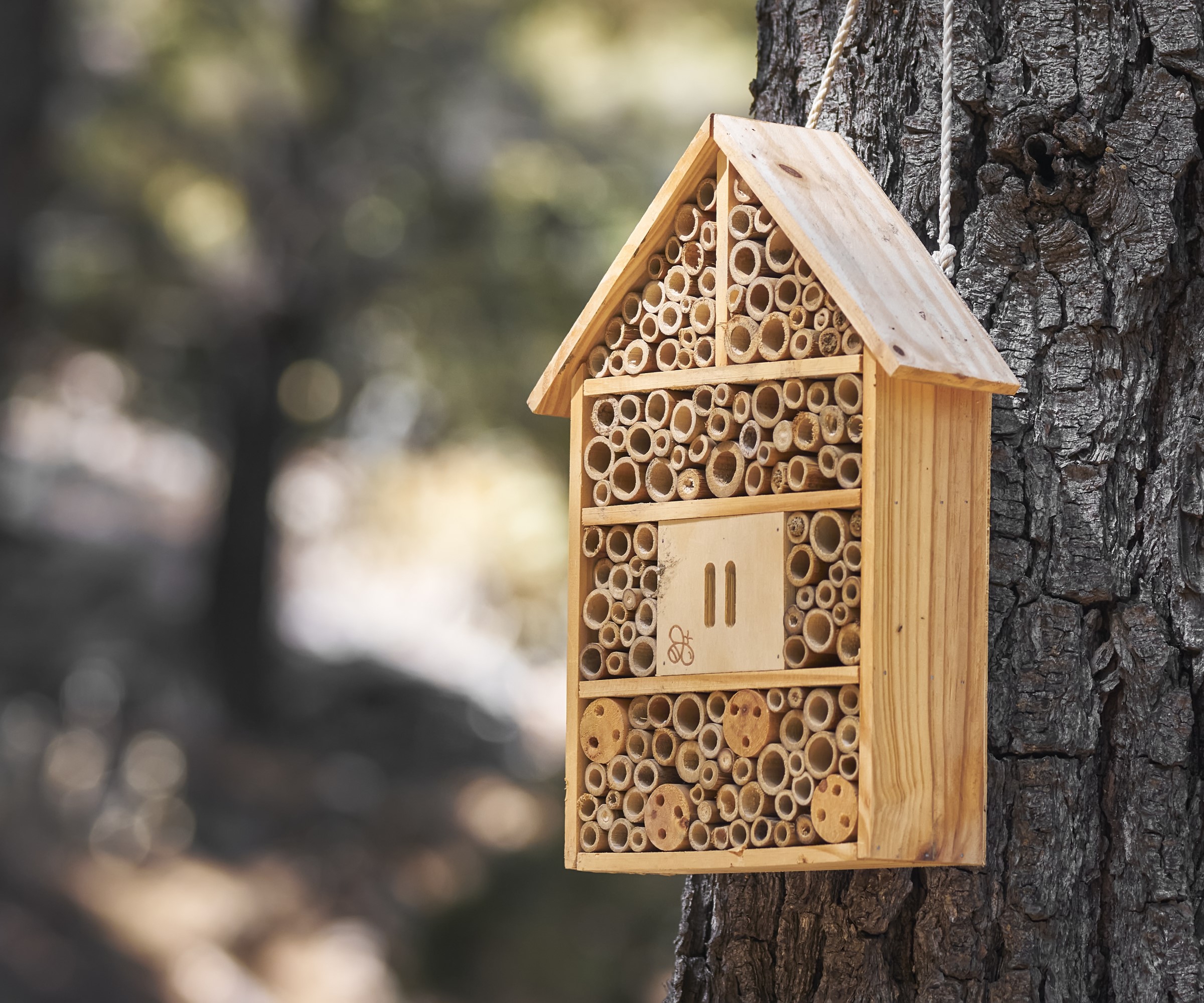
A bee hotel can be bought ready made if you don't want to try your hand at DIY
3. Keep any poolside food covered
It may sound obvious, but removing the temptation of a delicious looking feast on your pool patio will help keep bees away. ‘Bees love using the pool as a water source and to cool off a bit during the hot summer months,’ says Alicia Toedter, Education and Content Leader at Leslie’s. ‘Limiting sweet beverages like soda cans and keeping food covered is another way to keep bees away. As bees are important pollinators to our ecosystems, deterrent tactics such as these are important.’
Keep any open packets closed with clips, opt for sealed drink dispensers with a handy tap instead of jugs, and try jar-style glasses with screw-on lids and reusable straws for bee-defying dining. When it comes to covering prepared food, eco-friendly options include vintage-style mesh food umbrellas, such as these collapsible food covers from Amazon, reusable sheets like these colorful patterned beeswax wraps from Amazon, and elasticated fabric dish or bowl covers.
4. Make a bee watering station away from the pool
Lure bees away from your pool by providing their very own bee watering station in another part of the yard. ‘One idea we like is a bird bath with a solar-powered fountain,’ says David M. Burrows. ‘The gentle fountain will keep the water fresh and discourage mosquitos from breeding along with attracting pollinators visually to the resource. Add a few rocks to provide multiple islands for insects to land on and grab a drink without falling in and drowning. A fountain will also help you visually to know when the reservoir needs refilling. If it isn’t flowing, you either need to add water or move the solar panel to a sunnier location.’
If this all sounds too ornate and fussy for your yard, then try a more rustic solution for your bee-friendly water feature idea. ‘Another option is using a large, galvanized tub, old barrel bottom, or other discarded item which can safely hold water,' says David. 'It’s always good to include a small pump to keep the water gently moving and fresh. You can also add water lilies as they provide a landing pad for bees, and some lilies will bloom during the spring and summer months attracting even more bees and pollinators.’
David also adds that siting a bee watering hole is all important. ‘To find the best location for a water resource, you may be able to observe from which corner of the pool area bees are flying from and towards your pool. Bees tend to create “flightpaths” as they find sources of pollen and nectar and then report those locations to the other bees in the hive. Once established, it’s good to keep a water source in the same location so the bees can easily locate it.’

It's important to provide bees with an alternative water source if you want to keep them away from your pool
5. Plant up pots of strongly scented herbs and flowers
Highly sensitive to smell bees have a love/hate relationship with most natural fragrances. While there are many sweet, floral perfumes that help guide them to the best pollen sources, there are plenty of fragrant flowers and aromatic herbs that they simply can’t bear. Use this knowledge to your advantage by surrounding your pool – and alfresco dining area – with these disliked strongly scented plants.
Suited to growing in both a container garden and borders, plants high on a bee’s no-go list include vibrant geraniums, marigolds, thyme, spearmint and eucalyptus. With a high concentration of natural oils in their foliage, they omit a strong fragrance bees don't like. Do be certain to remove any flowers before they open though. Citrus plants such as lemon and orange trees and lemongrass (aka citronella) are also effective deterrents too, and can be effective in getting rid of carpenter bees.
6. Avoid bright colors near the pool
Color plays an important role for bees when locating sources of pollen, and bright shades prove hugely attractive whether they happen to be flowers or your favorite poolside outdoor furniture or inflatable. It’s well worth bearing this in mind when it comes to choosing blooms and accessories to use around the pool. It may be worth opting for neutral or more muted shades to help avoid any confusion.
Scientists have spent many years researching how bees see, and it is very different to us humans. With an ability to see ultraviolet light but no photoreceptor for red, bees are naturally drawn to shades of blue, violet and purple.
Wonder how bees locate blooms outside of this cool spectrum? Well, that is largely down to their sense of smell – less powerful than their sense of sight but strong at close range – and the plant’s own pollen signposts present on each bloom. These are only visible under UV light which we can’t see but appear like runway guidelights to a pollinator.
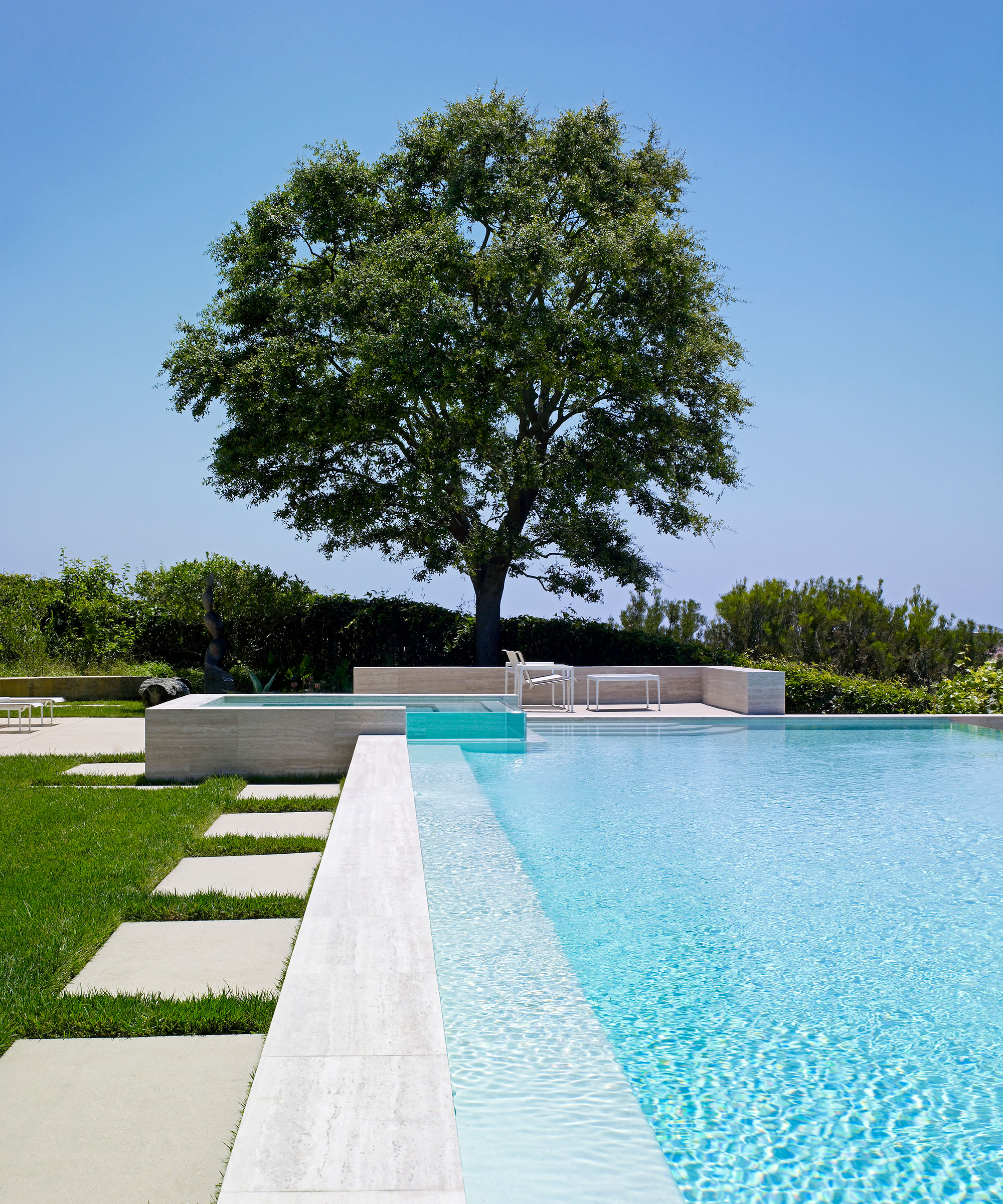
Stick to neutral loungers and pool furniture rather than bee-attracting bright colors
7. Add jets and moving water to your pool
Bees are known to dislike rapidly moving water as they can easily drown, so why not use this as an excuse to add a jet or water feature to your pool area. Whether you are embarking on a new pool or modifying an existing design, there are plenty of water effects such as jets, waterfalls or fountains you can add to enhance both your workout, recreation and décor.
It’s worth knowing though that using water in this way will impact on the flow rate, drainage and general performance of your pool, so professional advice should always be sought before any work takes place.
8. Distract bees with hummingbird feeders
Placing a hummingbird feeder in an area far from your pool can help to lure bees away from your bathing area. More attractive to a pollinator’s keen sense of smell than chlorinated water, they will soon be nourishing these valuable insects while you can bathe in peace.
Adding a drop or two of Anise Oil into the sugar solution will prove irresistible to bees and help them locate the feeders quickly. Once they become familiar with the sweet source, omit the oil and just keep the sugar water topped up to prevent them feeding elsewhere.
More Birds Red Glass Hummingbird Feeder | $17.99 from Amazon
The five flower-shaped feeding ports and red hue of this glass hummingbird feeder will also help to attract plenty of bees to feed from it too. It will look super stylish hanging from a branch or hook in a spot away from your swimming pool.
FAQs
What naturally keeps bees away from water?
Mixing up and spraying a natural bee-repellent spray around your pool can be hugely effective. Choose an essential oil with a powerful fragrance that bees simply can’t stand – such as geranium, spearmint, eucalyptus or thyme – and add a generous amount to a water filled spray bottle. Shake and then spray around the edge of your pool and on to any nearby loungers, chairs or towels before you take a dip, and hopefully the bees will be sure to stay well clear.
If you do find a bee in your pool, don’t reach out and scoop it up with your hands. Chances are the bee is distressed if it is stuck in your pool and will sting on instinct. Instead, carefully pick it up with a cup, plate or whatever else is nearby and place the bee in the sun. Allow it to rest for a while, and it should then fly off when ready.

Journalist Jill Morgan has spent over 20 years writing and editing gardening, interior and property features. Titles she has worked on include The English Home, House Beautiful, Ideal Home, Houzz and Modern Gardens and she writes regularly for H&G as a Contributing Editor. Whilst she is a dab hand at renovation projects and DIY, she is happiest when out digging in the garden or planning a new border.
